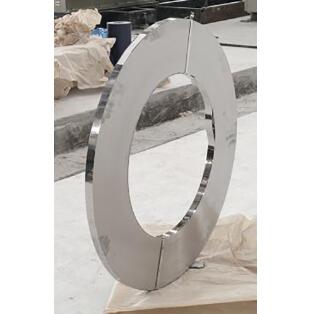The Superior Weldability and Formability of 321 Stainless Steel Strip: Advantages Over Other Alloys
2024-07-09
321 Stainless Steel Strip is renowned for its excellent performance in high-temperature environments, but its advantages extend beyond thermal stability. Two key attributes that set it apart from other stainless steel alloys are its superior weldability and formability. These properties make 321 Stainless Steel Strip a preferred choice in various demanding applications. In this blog, we will explore the specific advantages of using 321 Stainless Steel Strip over other stainless steel alloys in terms of weldability and formability.
Weldability of 321 Stainless Steel Strip
Weldability refers to the ease with which a material can be welded without compromising its properties or structural integrity. 321 Stainless Steel Strip offers several advantages in this regard:
1. Reduced Sensitization Risk
Sensitization occurs when chromium carbides form at grain boundaries during welding, leading to intergranular corrosion. 321 Stainless Steel Strip is stabilized with titanium, which prevents chromium carbide formation, thereby reducing the risk of sensitization. This makes it a better choice for welded structures that require long-term corrosion resistance.
2. Consistency in Weld Quality
The stabilized nature of 321 Stainless Steel Strip ensures that the material maintains its properties during and after welding. This consistency results in high-quality welds that retain their mechanical strength and corrosion resistance. This is particularly important in applications like chemical processing and aerospace, where reliable welds are critical.
3. Compatibility with Various Welding Techniques
321 Stainless Steel Strip is compatible with a range of welding techniques, including TIG (Tungsten Inert Gas), MIG (Metal Inert Gas), and resistance welding. This versatility allows manufacturers to choose the most suitable welding method for their specific application, ensuring optimal results.
4. Reduced Post-Weld Treatments
Due to its excellent resistance to sensitization and thermal stability, 321 Stainless Steel Strip often requires fewer post-weld treatments compared to other alloys. This reduces the time and cost associated with welding, making the manufacturing process more efficient.
Formability of 321 Stainless Steel Strip
Formability is the ability of a material to be easily shaped or formed without cracking or losing its structural integrity. 321 Stainless Steel Strip offers several formability advantages:
1. High Ductility
321 Stainless Steel Strip exhibits high ductility, meaning it can undergo significant plastic deformation before rupture. This property allows it to be easily formed into complex shapes and components without cracking. High ductility is especially beneficial in applications requiring precise dimensions and intricate designs.
2. Consistency in Forming Processes
The stabilized nature of 321 Stainless Steel Strip ensures that it maintains its mechanical properties during forming processes. This consistency allows for predictable and reliable forming outcomes, which is crucial in industries like automotive and aerospace where precision is paramount.
3. Suitability for Deep Drawing and Bending
The excellent formability of 321 Stainless Steel Strip makes it suitable for deep drawing and bending operations. These forming processes are commonly used in manufacturing components such as exhaust systems, heat exchangers, and food processing equipment, where maintaining the integrity of the material is essential.
4. Minimized Risk of Work Hardening
Work hardening, or strain hardening, occurs when a material becomes harder and more brittle due to plastic deformation. 321 Stainless Steel Strip exhibits minimized work hardening compared to other alloys, allowing for more extensive forming operations without compromising the material's ductility and toughness.
Advantages Over Other Stainless Steel Alloys
1. Enhanced Performance in High-Temperature Applications
Compared to other stainless steel alloys, 321 Stainless Steel Strip offers superior performance in high-temperature applications due to its stabilization with titanium. This prevents sensitization and ensures consistent properties during welding and forming, making it ideal for demanding environments.
2. Improved Corrosion Resistance
The titanium stabilization of 321 Stainless Steel Strip enhances its resistance to intergranular corrosion, especially in welded structures. This advantage over other alloys makes it a preferred choice in chemical processing, power generation, and other industries where corrosion resistance is critical.
3. Greater Versatility in Manufacturing
The superior weldability and formability of 321 Stainless Steel Strip provide greater versatility in manufacturing. It can be used in a wide range of applications and formed into complex shapes without compromising its properties. This versatility makes it a valuable material for various industrial applications.
Conclusion
321 Stainless Steel Strip offers distinct advantages over other stainless steel alloys in terms of weldability and formability. Its reduced sensitization risk, consistent weld quality, compatibility with various welding techniques, and minimized need for post-weld treatments make it an excellent choice for welded structures. Additionally, its high ductility, consistent forming outcomes, suitability for deep drawing and bending, and minimized risk of work hardening contribute to its superior formability. These properties make 321 Stainless Steel Strip a versatile and reliable material for high-temperature and demanding applications across multiple industries.



